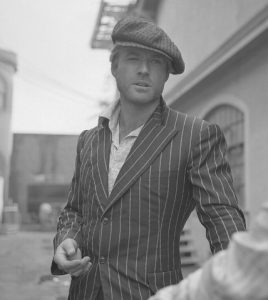By Armando

Robert Redford during the filming of The Sting (1973). Photo by Ken Dare, Los Angeles Times / Courtesy of the Dutch National Archives.
Redford began his career in television and on Broadway before breaking through in film. His first leading role that brought him recognition was Barefoot in the Park (1967) opposite Jane Fonda. Two years later, Butch Cassidy and the Sundance Kid (1969) made him a household name. His pairing with Paul Newman became one of the most beloved duos in film history. They reunited in The Sting (1973), which became a massive hit and earned Redford an Oscar nomination for Best Actor.
An American Icon
In the 1970s, Redford wasn’t just a star. With his blond hair, windswept style, and natural charisma, he became a cultural symbol of American masculinity. But he quickly proved he was more than an image. In The Candidate (1972), Jeremiah Johnson (1972), Three Days of the Condor (1975), and All the President’s Men (1976), he pursued stories with political and social weight. By the end of the decade, he had become both a top box office draw and one of the most respected actors of his generation.
Behind the Camera
In 1980, Redford made his directing debut with Ordinary People, a family drama that went on to win four Academy Awards, including Best Picture and Best Director. The film marked his transformation from leading man to accomplished filmmaker and proved he could command just as much respect behind the camera.
Transforming Independent Film
At a time when independent filmmakers in America had little support and almost no path to distribution, Redford created something revolutionary. In 1981 he founded the Sundance Institute, which led to the Sundance Film Festival. Before Sundance, the world’s major film festivals were in Europe, and Hollywood left little room for small, personal projects. Sundance gave American filmmakers a stage, a community, and a marketplace.
By the late 1980s and 1990s, Sundance had exploded, launching careers of Steven Soderbergh (Sex, Lies, and Videotape), Quentin Tarantino (Reservoir Dogs), Kevin Smith (Clerks), and later Ava DuVernay, Ryan Coogler, and many more. It quickly became the most important platform for independent cinema in the world, making Redford not just a star but a champion of independent filmmaking.
Redford himself explained it simply: “The goal for me was very simple: to celebrate people who don’t get celebrated, who are ignored or undiscovered and who deserve to be discovered.”
The Sundance Institute said in a statement:
“We are deeply saddened by the loss of our founder and friend Robert Redford. Bob’s vision of a space and a platform for independent voices launched a movement that, over four decades later, has inspired generations of artists and redefined cinema in the U.S. and around the world. Beyond his enormous contributions to culture at large, we will miss his generosity, clarity of purpose, curiosity, rebellious spirit, and his love for the creative process. We are humbled to be among the stewards of his remarkable legacy, which will continue to guide the Institute in perpetuity.”
Later Work and Final Years
Even as Sundance became his greatest contribution, Redford continued to act and direct. He starred in The Natural (1984), Out of Africa (1985), and later directed acclaimed films such as A River Runs Through It (1992) and Quiz Show (1994). In his later years, he delivered a remarkable solo performance in All Is Lost (2013), reached new audiences in Marvel’s Captain America: The Winter Soldier (2014), and closed his acting career with The Old Man & the Gun (2018).
A Lasting Legacy
Redford’s honors included two Academy Awards, three Golden Globes, and the Presidential Medal of Freedom. But his influence cannot be measured by awards alone. He was a matinee idol who became one of the biggest stars of his time, a director whose first film won the industry’s highest honors, and the figure who built Sundance into the foundation of independent film worldwide.
Robert Redford’s life was a story of reinvention and impact. From leading man to filmmaker, from star to champion of others, his face defined an era but his vision gave generations of storytellers a place to thrive. He will be remembered not only for the films he made, but for the countless films that exist because of him.
